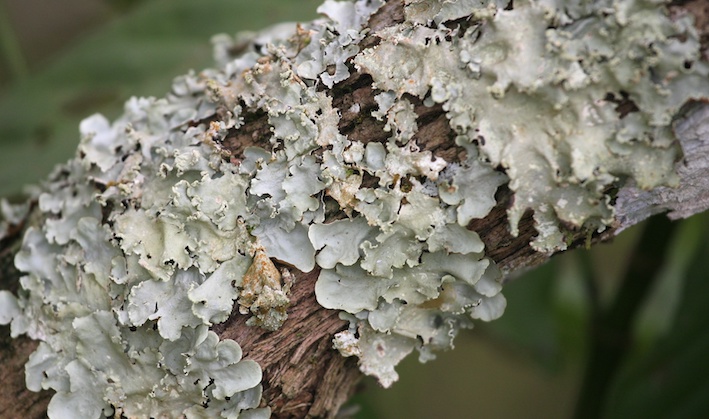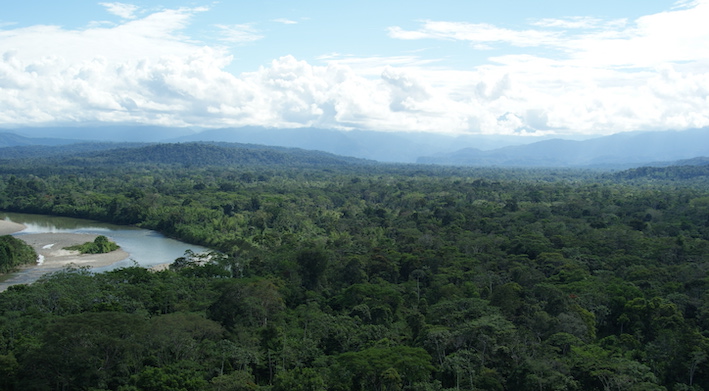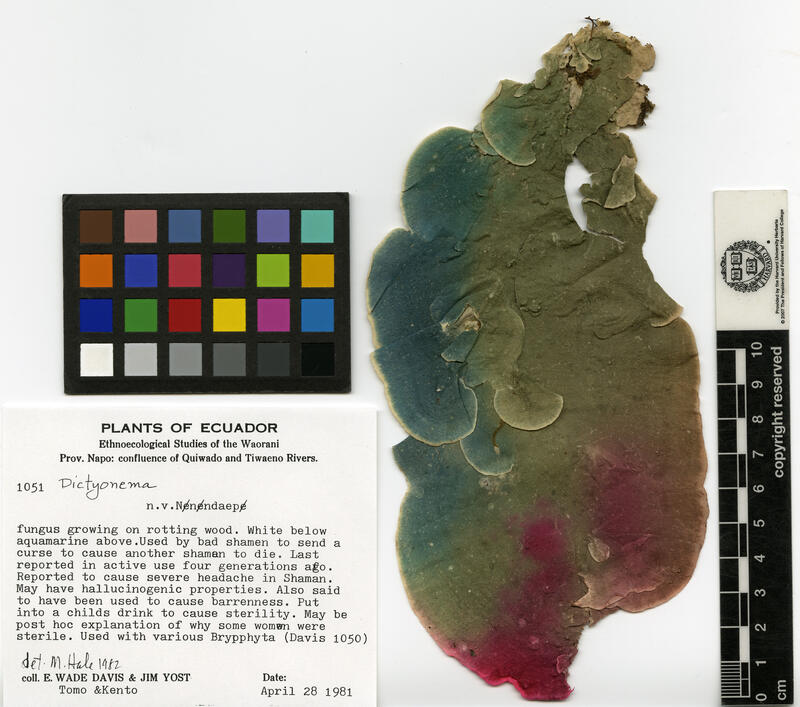Let’s take a look back to the radical 80’s, when a couple of curious Harvard scientists went into the Ecuadorian Amazon… and discovered something magical… A new species of psychedelic lichen so rare, no other sample has ever been taken since then.
But first things first. What the heck is lichen??
What is Lichen?

A lichen is not a single organism. Neither algae or fungi, lichens are a clever combination of both life forms. Think of it as a “chimera” of sorts. In a symbiotic (or “win-win”) relationship, the algae part makes the sugars to feed the lichen via photosynthesis. In return, the fungi part builds the “web” that gives water to the algae and protects it. So even though they look like plants and work like plants, lichens are NOT actual plants!
Which brings us to the thrilling discovery of psilocybin and DMT in this particular lichen. Psilocybin is the active ingredient in magic mushrooms and truffles. DMT, on the other hand, is often found in ayahuasca — a hallucinogen found only in the Amazon. To scientists’ surprise, they discovered a new species of lichen that has both psychedelic compounds… Dictyonema huaorani.
Does the so-called “trippy lichen” live up to its hype? Let’s find out!
Discovery in 1981
In 1981, a couple of ethnobotanists saw the psychedelic lichen for the first time in scientific history. Jim Yost and Wade Davis were doing some research in Ecuador’s rainforests, when the Waorani tribe led them to where the lichen grew. The scientists wrote about their discovery in a 1983 paper:
“In the spring of 1981, whilst we were engaged in ethnobotanical studies in eastern Ecuador, our attention was drawn to a most peculiar use of hallucinogens by the Waorani, a small isolated group of some 600 Indians…

“Amongst most Amazonian tribes, hallucinogenic intoxication is considered to be a collective journey into the subconscious and, as such, is a quintessentially social event.
Like a bounty hunter on the prowl, Yost had been looking for the psychedelic lichen for 7 years. But it was so rare. The chances of actually finding it were slim to none. Even the local Waorani tribe went to great lengths just to procure it.
The Shaman’s Curse

The Waorani tribe has a special name for the psychedelic lichen: ‘nenendape‘. Back in 1981, they told Yost and Davis that while their ancestors once ate the lichen, the Waorani had stopped taking it for 80 years or so — roughly 4 generations.
The reason? An evil shaman’s curse, who ate the nenendape in a ritual… killing other Waorani as a result. Espooky!
“The Waorani, however, consider the use of hallucinogens to be an aggressive antisocial act; so the shaman, or ido, who desires to project a curse takes the drug alone or accompanied only by his wife at night in the secrecy of the forest or in an isolated house.”
The nenendape was extremely rare, so Yost and Davis worked overtime to search for more. They soon got a few samples, which they preserved carefully for study back in Harvard. Today, Yost and Davis are considered as the first Westerners to see the psychedelic lichen in real life.
Revival in 2014
In 2014, the study was revived by a new team of Harvard scientists, led by Michaela Schmull. They analysed the lichen’s DNA to prove that it was genuinely a “new” species – and not just some shaman’s tale. Using a method called liquid chromatography-mass spectrometry (LC-MS), they checked if the lichen had any psychedelics at all.
And so it did! Traces of psilocybin, tryptamine, 5-meO-DMT, 5-MeOT, 5-MeO-NMT, and 5-MT. So in honour of the Waorani tribe who used it first, the Harvard team named the lichen Dictyonema huaorani. To this day, it remains the only species of lichen to have both psilocybin and DMT.
Sadly, the team only had the one specimen from 1981 — which was all dried up. So even though they were SURE there was psilocybin & DMT, they couldn’t say the same of the other stuff.
“Hallucinogenic lichens might have been used by indigenous people for many centuries.
“The new species Dictyonema huaorani is a likely candidate [for further study] and we plan to obtain fresh material for more detailed chemical analysis.”
If Harvard decides to get fresh samples, they’ll have to mount a new expedition to eastern Ecuador, in the northwest Amazon. That’ll be a HUGE task to take on! Something tells us they’d need a chopper and some sturdy ropes…
“This species can be found in the forest canopy [aka the “tree-tops”] of the dense Amazon forest only… This could explain why this species has been collected only once to date.”
Tip of the Iceberg
Now you know why it’s possible for lichen to have psilocybin… it is part fungi after all! We may not have uncovered the lichen’s mystery fully. But as more people invest in psychedelic research — such as Canadian companies have in Jamaica — there are sure to be more discoveries along the way. A new excursion to Ecuador? With big budgets and modern tools?
Hey, if this new psychedelic renaissance goes on… Maybe even sooner than you think. In the past year alone, science has pumped out evidence that psychedelics — such as magic mushrooms and truffles — can help treat serious conditions. From resistant depression and PTSD, to substance abuse, end-of-life care, and even post-lockdown anxiety. Name it, amigo… Shrooms and truffles can (most likely) help you out!
Grow your own Rainforest of Wonders in an easy-to-use box! Check out the AMAZING deals on our GROW KITS
So what do you think? Would you ever try psilocybin in its lichen form? (Slimy!)






